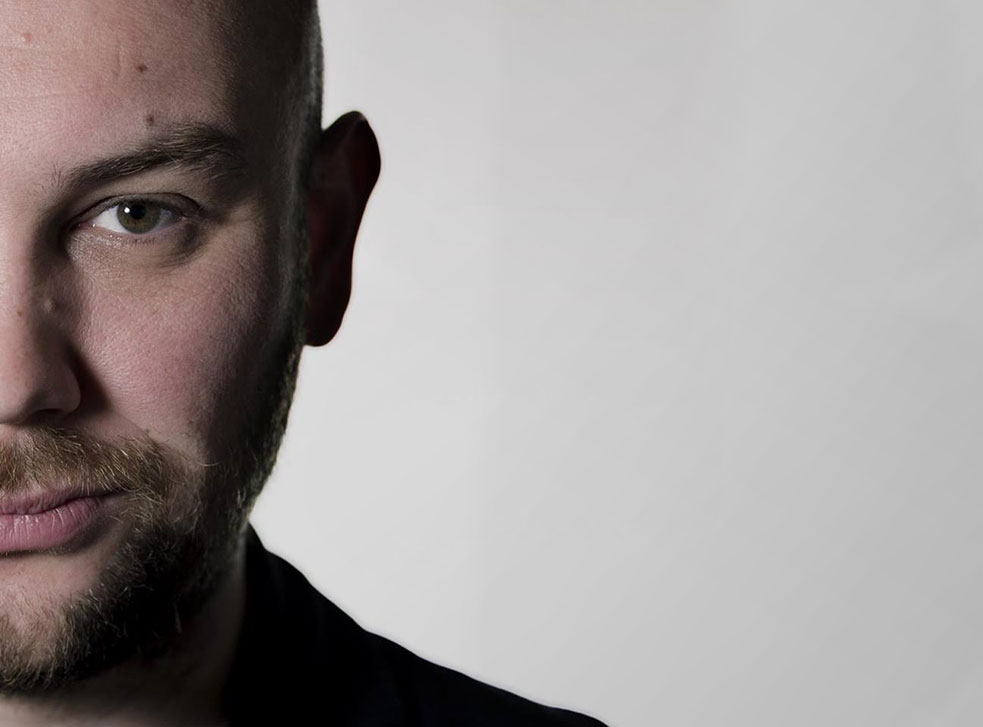
Bosnian photojournalist Ziyah Gafić photographs the aftermath of conflict. (Watch his TED Talk, “Everyday objects, tragic histories.”) In his most recent book, Quest for Identity, he catalogs the belongings of Bosnia’s genocide victims, everyday objects like keys, books, combs and glasses that were exhumed from mass graves. The objects are still being used to identify the bodies from this two-decade-old conflict. Only 12 when the Bosnian War began, the Sarajevo native has spent the last 15 years turning his lens on conflicts around the world as a way of coming to terms with the tragedy of his homeland. Here, he tells the TED Blog about looking for patterns of violence, the relationship between detachment and empathy, and what it’s like to grow up with war.
Tell us about the overall focus of your work.
The stories I’m interested in are focused on countries that have followed a similar pattern of violence as my homeland, Bosnia. My book Troubled Islam: Short Stories from Troubled Societies covers my own journey starting with the aftermath of war in Bosnia, and then exploring the consequences of conflict in the northwestern province of Pakistan, Palestine and Israel to Afghanistan, Iraq, Iran, Pakistan, Chechnya and Lebanon. “Aftermath” is a key word: the aftermaths of conflicts in these countries follow a similar sequence to that of Bosnia: ethnic violence, fraternal war, ethnic cleansing and, ultimately, genocide.
My idea was to compare countries that are thousands of miles away, on different continents, yet following the same vicious patterns. These countries have certain things in common. One is ethnic wars, though “ethnic” is probably not the most fortunate choice of word. All these countries have significant Muslim communities, or have majority-Muslim populations. In the post-9/11 world, these elements became very relevant.
How is Quest for Identity related to Troubled Islam?
I worked on Quest for Identity in parallel to Troubled Islam, but Quest is totally different from everything I do, because my usual approach to photography is very subjective. I wanted to do something on the other side of the spectrum, something extremely objective—something neutral, something accurate. By coincidence, while doing other stories, around 10 years ago I stumbled upon these objects that are being used as forensic evidence in the ongoing process of identifying over 30,000 missing Bosnians.
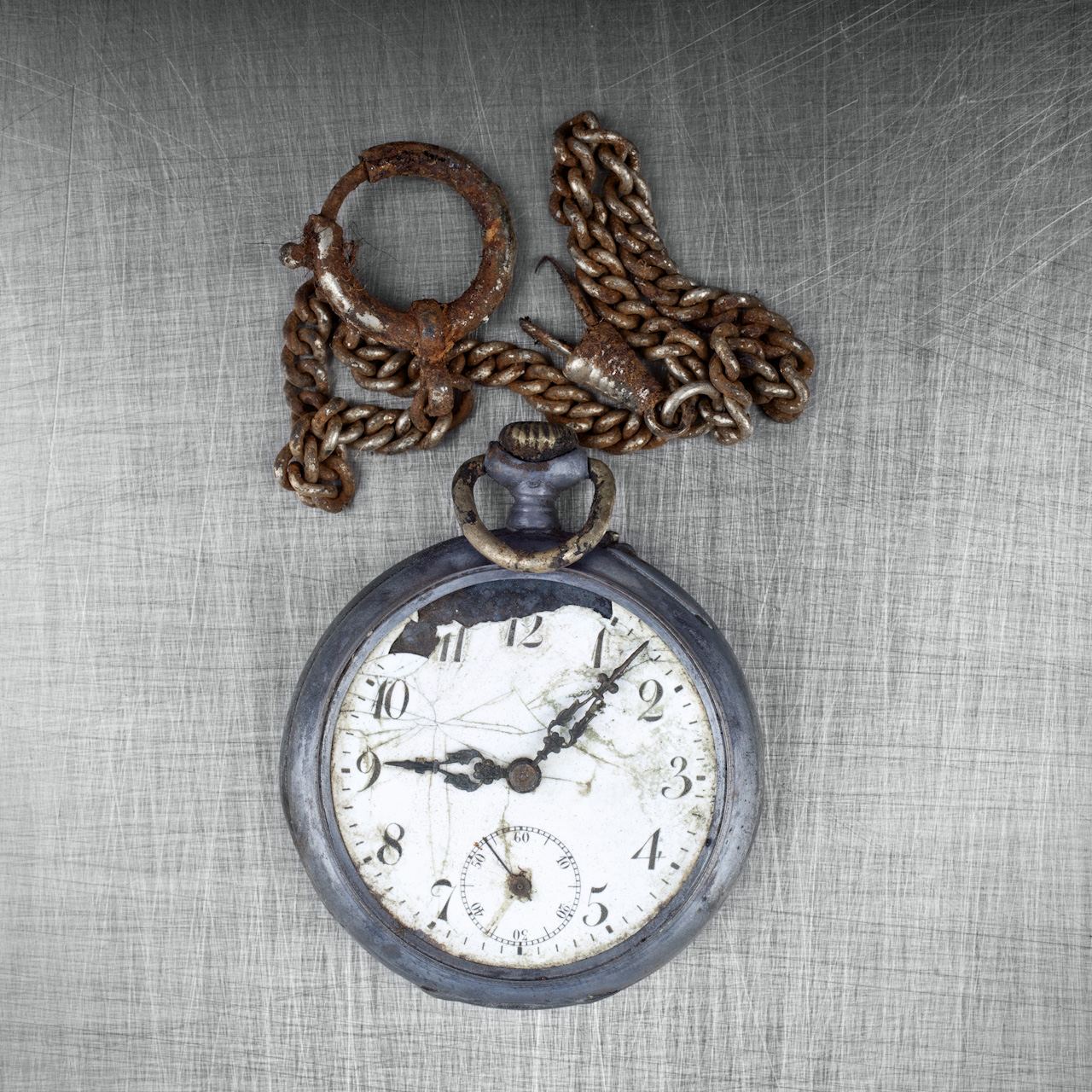
From Quest for Identity. A watch from among the personal belongings recovered from a Bosnian mass grave, lying on a forensics table. These items were carried by people as they fled from the Serb Army, or when they were taken for execution. Photo: Ziyah Gafić
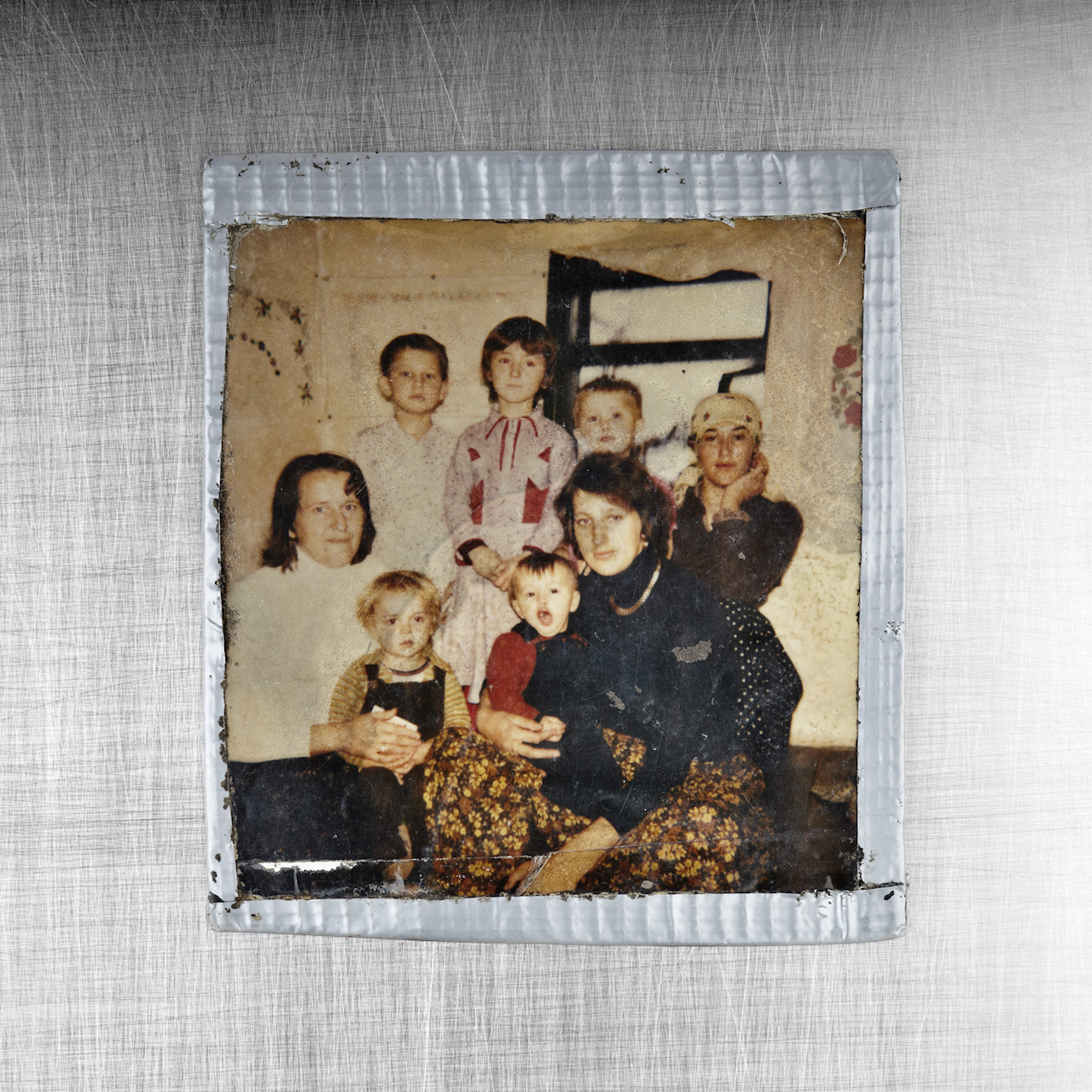
A family photo, from Quest for Identity. Personal belongings are still being recovered from countless mass graves across Bosnia and Herzegovina, and are used as evidence in ongoing trials for war crimes—and in the ongoing identification of their owners. Photo: Ziyah Gafić
Why did you want to start photographing these items?
The simplicity of the objects really struck me. I believe photography is about empathy, and I think the fact that we all share these items—everyone has owned some of these things at some point in their lives—triggers empathy in whoever sees these images. Photographs should make us imagine ourselves in other people’s shoes, and often that process is clouded by cultural differences. Quest for Identity goes beyond cultural differences.
It seems that this would be overwhelmingly emotional work. How do you feel when you’re photographing these very personal items?
On the one hand, it’s personal because it involves my people and my country, but the process allows me to be detached. You go into the morgue, effectively, where everyone is dressed in white. You get gloves, a mask, a hat. So there is immediate physical detachment. I also have a strong sense of doing something useful. Between the distance provided by the clothes and the feeling of purpose, it makes it easier. Well, easy’s not the right word, because we are talking about thousands of people. But it gives enough room to breathe.
Visually, they are very clean, clinical, forensic photographs. The result is something that is extremely objective, extremely accurate—but at the same time it provokes, cross-culturally, from India to the US, the same very emotional response. That is the feedback I was hoping for.
What happens to the objects after you’ve photographed them?
After they’ve been used by forensics and the lawyers, the objects are shelved in several identification centers across the country. Sometimes they actually get destroyed. There was a big scandal in the International Criminal Tribunal for ex-Yugoslavia (ICTY), where, after the proceedings, they destroyed literally thousands of these objects. Which is unacceptable because in many cases, entire families are gone. All that remains are bones, which have been scattered in several mass graves—sometimes in a mass grave you will have only one bone from the deceased—and these everyday items. And then someone destroys the last material evidence of that person’s existence. So part of the idea is to create a massive and accurate online image bank that will have hi-res files, downloadable for personal use.
I am using photography to permanently freeze these objects in a very accurate form, at a certain time. So in case they are destroyed, at least we will have an accurate replica. Two-dimensional, but it’s something.
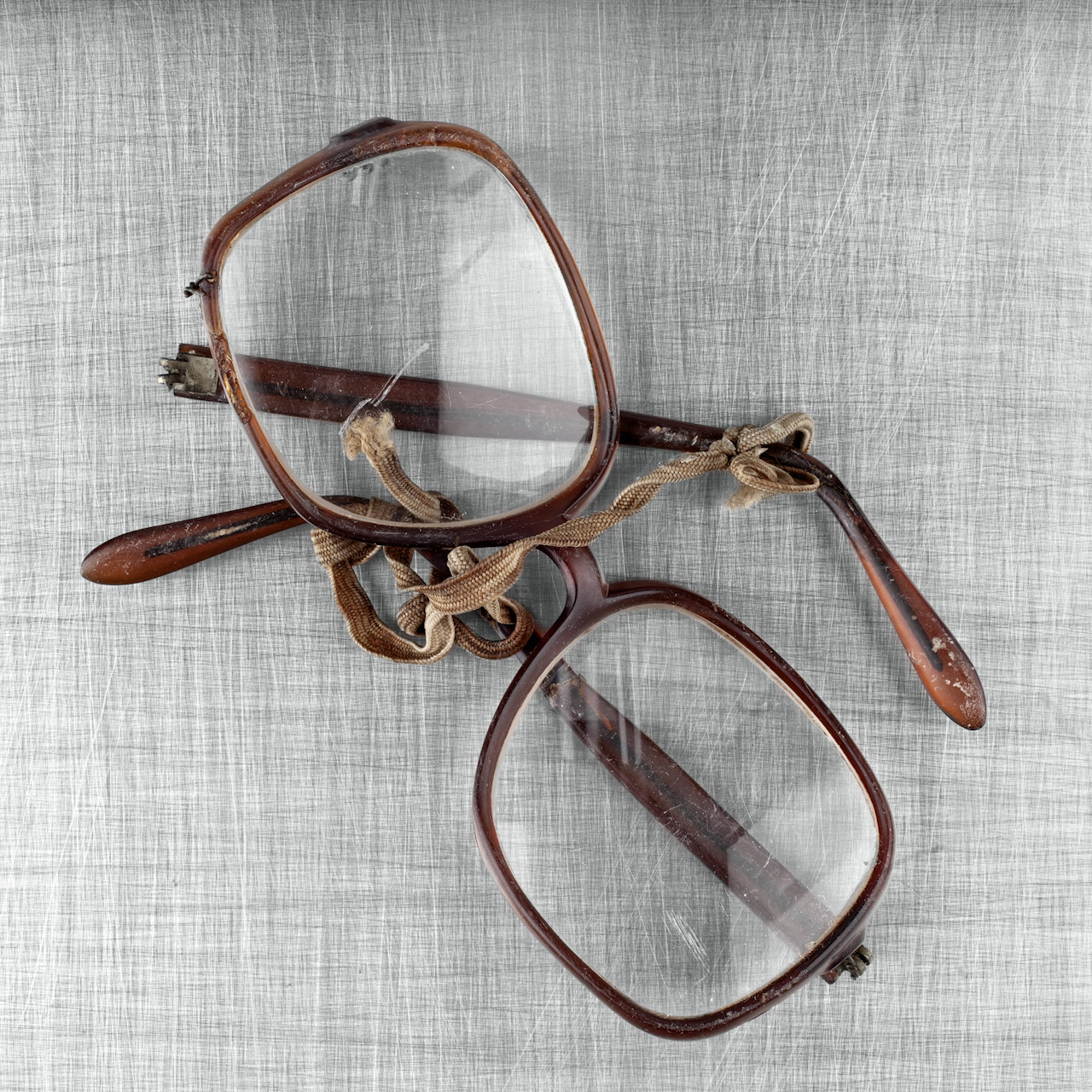
Glasses, from Quest for Identity. Photo: Ziyah Gafić
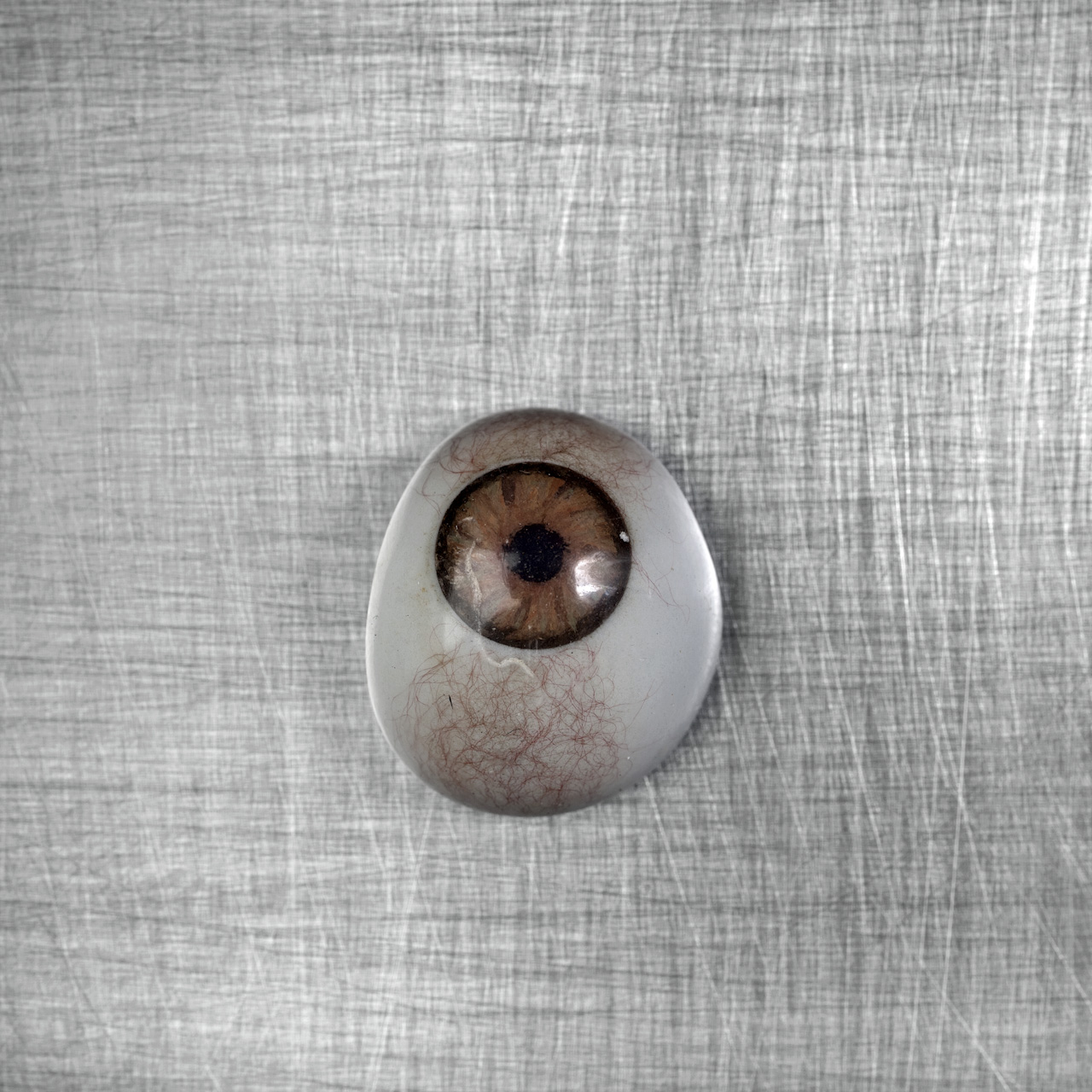
Glass eye, from Quest for Identity. Photo: Ziyah Gafić
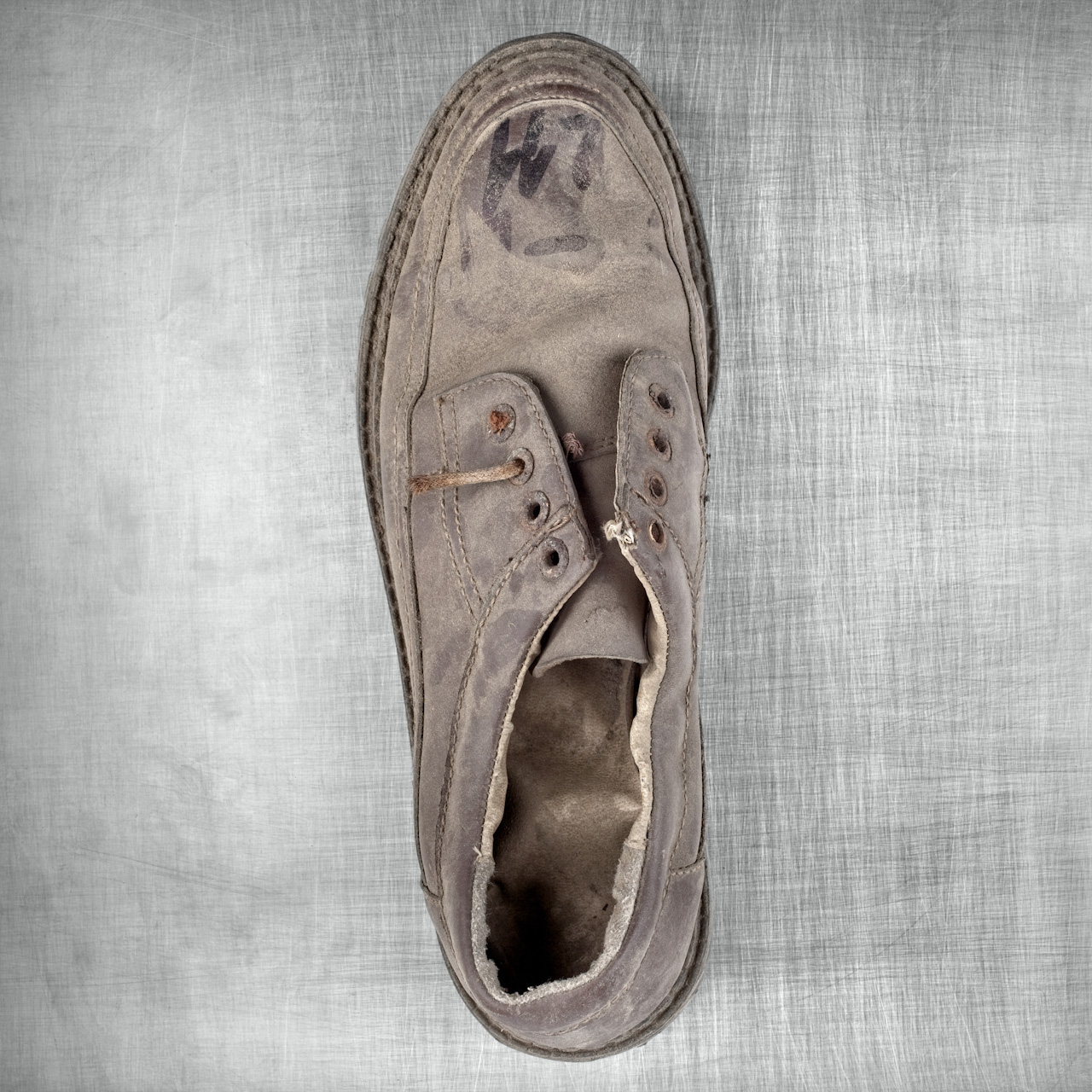
Shoe, from Quest for Identity. Photo: Ziyah Gafić
So is identification data also preserved in your photographs?
Yes. All the items are processed and cataloged by the time I come to take the picture. I include the original coding of the item in the image metadata. So effectively, if you see the picture, it will correspond to a bag in which the item is stored. Eventually, once these proceedings are done, the families can claim them.
Another problem is the nature of mass graves. If one body has been moved from a mass grave to another, that means the integrity of the body is damaged. So you might find a femur in one grave, they match the DNA, and call the family. They identify the person and bury the bone. Six months later, investigators open another mass grave, and they find a toe from the same body. By law, they have to go through the same procedure again, calling the family, matching the DNA, the family comes in, signs the documents. Then they must decide whether to include it in the grave, which would mean reopening it. That can happen a number of times. It becomes very complex, expensive and incredibly painful for survivors.
That’s another reason these items remain stored for a long time. They never know when they will have to reopen the case—it never goes cold.
What was your experience of the war?
I was a teenager. So for me, it was a very passive experience. But it was also a beautiful experience. I know that’s an awful thing to say, but war is a very special state of mind. It’s crystal clear, in a way. On one side, you have the fog of war, but on the other side, you have a very simple situation. Life becomes very simple and reduced to the basics.
All these everyday choices we make—the silly ones, like, “Am I having boiled eggs or omelette?” You don’t have those choices. The choices that you make during the day are reduced to one or two. One is making it through the day. And the other is providing food. Most of the time, because we were under siege, the electricity was cut off most of the time, which means we’d have to find wood for cooking, which is crazy in the city. And fetching water.
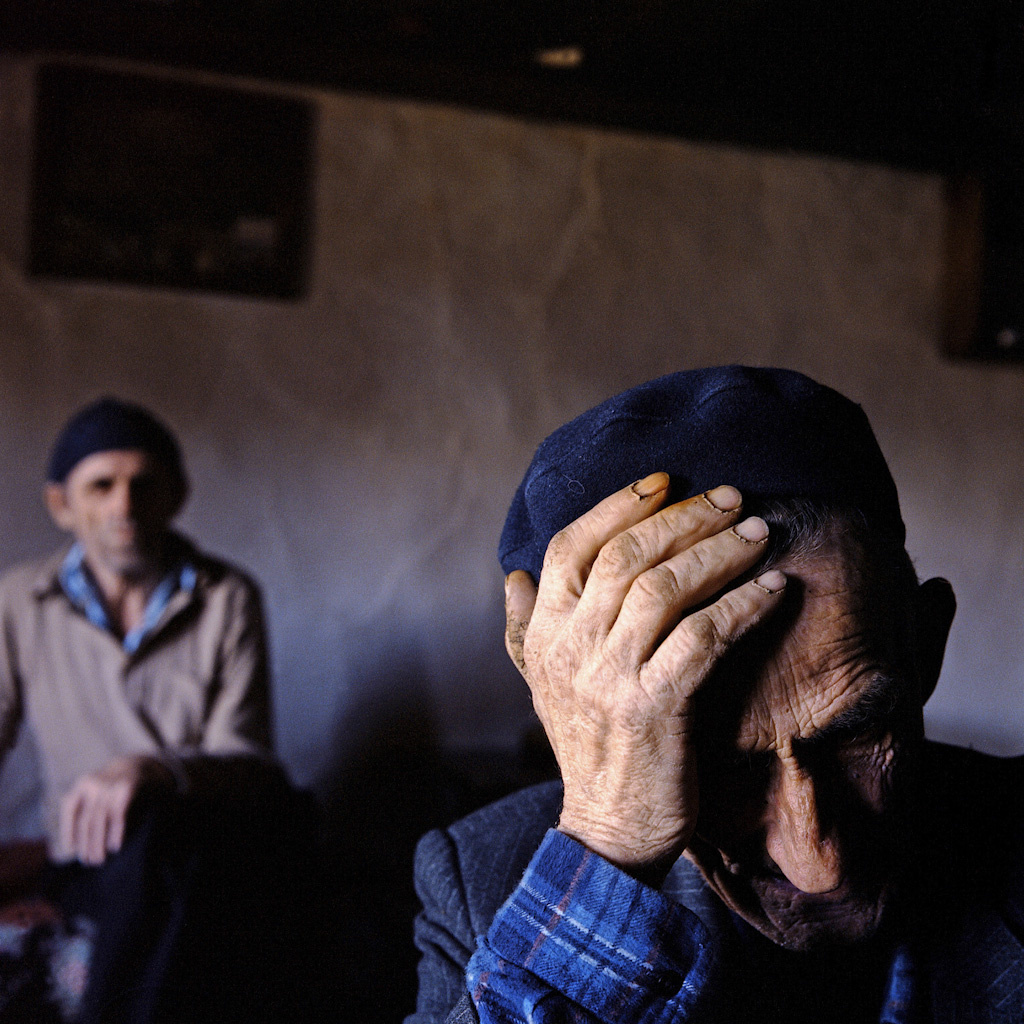
Men in the remote village of Lukomir, Bosnia. Founded in the 12th century, the village consists primarily of two families: Comor and Maslesa. To avoid incest, men marry women from the surrounding villages. From Troubled Islam: Short Stories from Troubled Societies. Photo: Ziyah Gafić
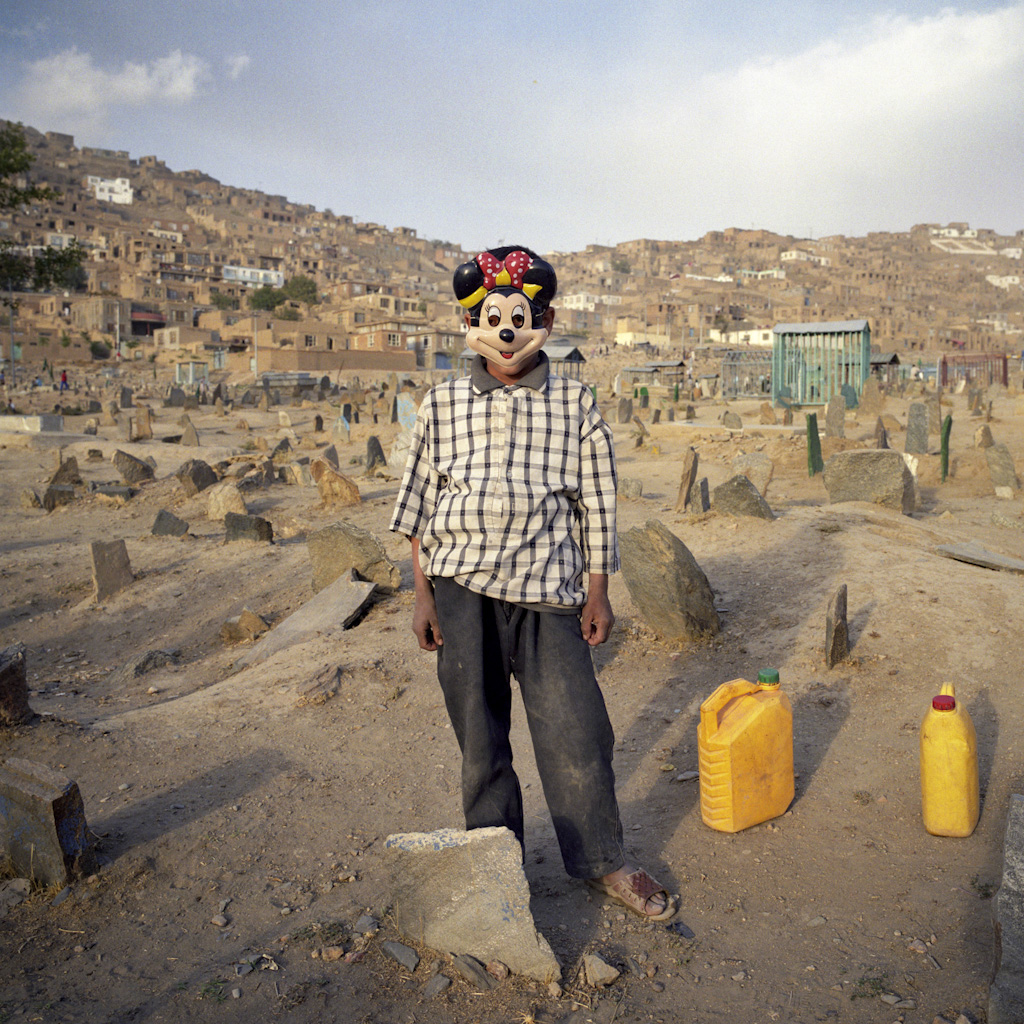
Post-“liberation” Afghanistan. Afghan cemeteries are very basic: simple stones mark graves, which are very rarely engraved. From Troubled Islam: Short Stories from Troubled Societies. Photo: Ziyah Gafić
What about school?
School was irregular, depending on shelling. We were going to school erratically, from day to day. But as I said, it’s a very reduced way of life, which then allows a lot of time for your brain to do other stuff. And in my case, being a teenager, I was having great fun doing what teenagers do. There were two underground—physically underground—bars I started going to. I started going to bars when I was 14, because in a war situation, you unwillingly mature overnight. Your soul ages faster in wartime.
Were you afraid?
Of course. It’s part of the deal. But human beings are very resilient. This resilience is one of the things that I’m exploring in Troubled Islam, how people manage to keep the fabric of society together, despite the absolute destruction that is coming upon them. And at the same time, as a kid, you are a passive participant, if that’s fair. You are a target, and as a teenager, you don’t have the means to respond. You can’t be a combatant, because you’re too young. So not being able to take part in what’s happening is deeply frustrating. I guess that’s what pushed me towards photography. In a way, maybe I was trying to re-create my state of mind during the conflict by going to countries caught in conflict.
And did you succeed?
No. I can say that after 10 years of doing it that it doesn’t work. All of the other conflicts that I’ve visited—they had less sentimental value for me than our own war. It’s happening to someone else, so the experience has limited therapeutical effect. I go there as a photographer, a foreigner, for a limited time, on expenses, living in a bubble. I had the choice to leave, whereas during our war, I had no choice. And rarely did the people in my photographs have a choice to leave the conflict. They are stuck, and that is the fundamental difference that makes it so hard to imagine yourself in their shoes. The lack of choice makes all the difference. Often, photojournalism is more about ourselves than about our subjects, and then it becomes a powerful, self-serving ego trip. Quest for Identity is on the other side of the spectrum. I wanted to do something detached from my ego.
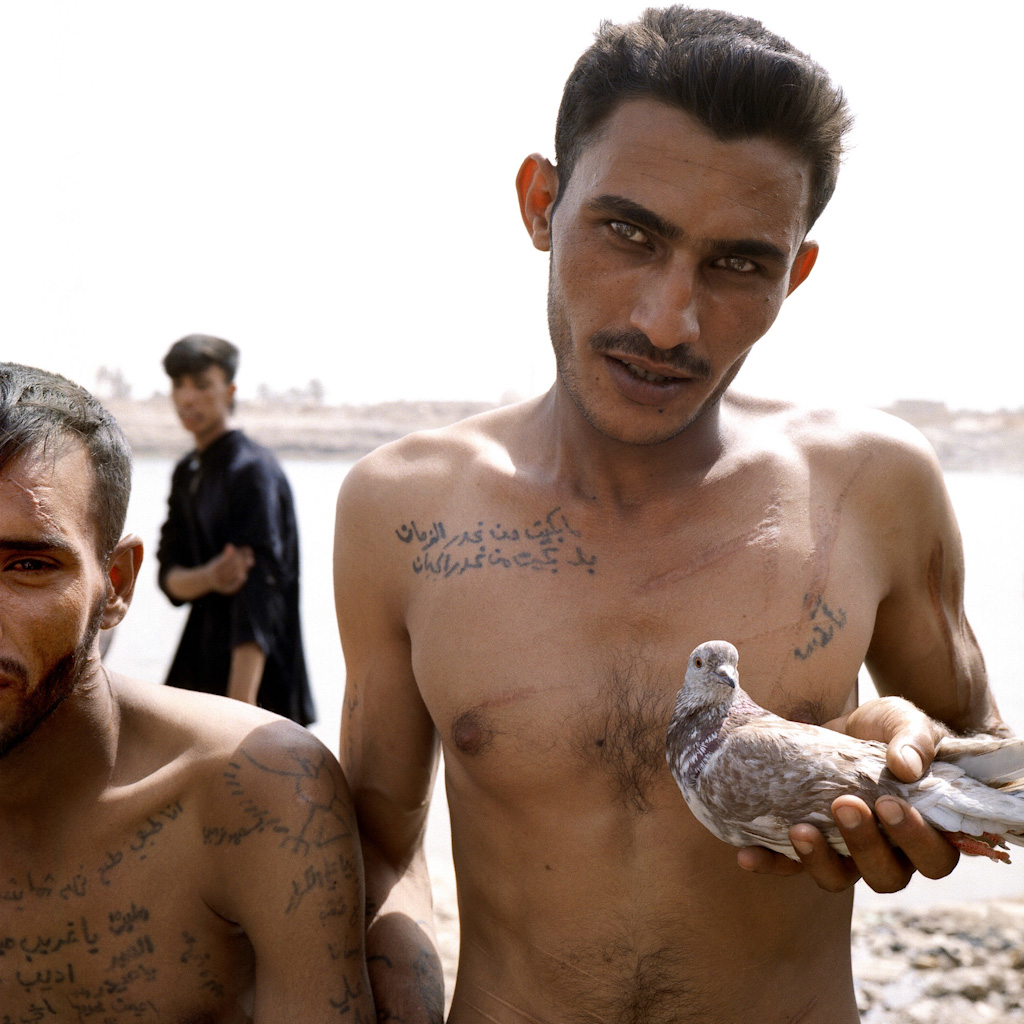
Saddam City, Baghdad. Brothers Hassan and Saad Nasir Alamy said they were imprisoned by Saddam’s regime without a trial. Some of their scars are from the torture, some of them self-inflicted. After having spent time in prison, they claim they’re mentally ill. From Troubled Islam: Short Stories from Troubled Societies. Photo: Ziyah Gafić
What are you planning next?
I always have several projects in development. One of them is about architectural changes and the reshaping of Mecca, the holy city for all the Muslims in the world, in Saudi Arabia. That’s something that I’m really interested in telling the story of. I’m also working on another project in the United States, called “Islam in America.” It’s basically a road trip through all 50 states, drawing a visual map—in photography and video—of Muslims in America, one of America’s fastest-growing communities. And finally, I’m working on a project about women in Saudi Arabia.
Do you feel that Quest for Identity is contributing to the healing of the community?
I’m quite modest about the effects of what I do. I don’t believe it will change the world, but it might change someone’s world.
It might still help connect families to their lost ones.
Hopefully. Hopefully. And if everything else fails, at least it will remain as a very accurate document of an era. I think that’s not to be overlooked at all. Because Bosnia is obviously an under-developed country, the resources for creating memorial centers and a culture of nurturing memory are very limited. So it’s up to us as individuals to do whatever we can.
Interested in seeing more of Ziyah Gafić’s work? Follow him on Instagram.
Comments (3)